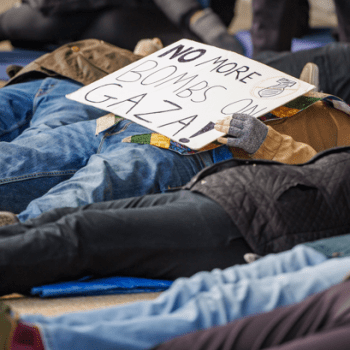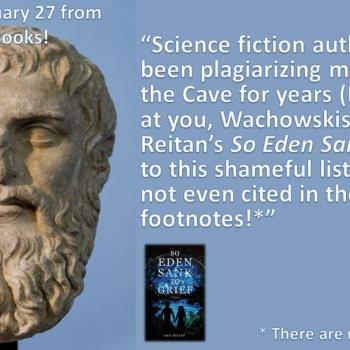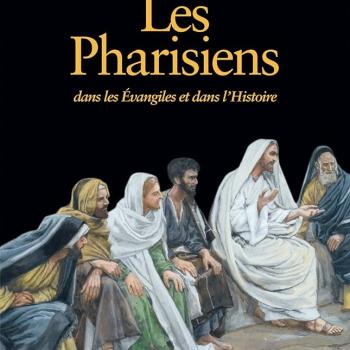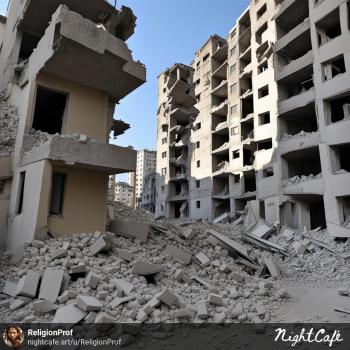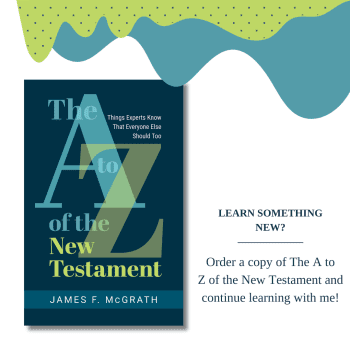I am happy to have the chance to participate in the Patheos Book Club about Danielle Shroyer’s book Where Jesus Prayed: Illuminating the Lord’s Prayer in the Holy Land. I was eager to participate, since I’ve been to the Holy Land multiple times, and will be leading a group of students traveling there again next summer, and so I was interested to see what she had to say. In essence, the book is a set of reflections, focused on particular words and phrases in the Lord’s Prayer, inspired by the act of praying the prayer while visiting locations in Israel and the West Bank.
Initially, there were a few details that made a negative impression – for instance, when Shroyer expressed frustration at the signs that tell people to keep off the grass at the Church of the Beatitudes in Tabgha, it seemed to me an expression of a common American attitude of privilege and individualism. Shroyer suggested that the grass could be reseeded, but this ignores the millions of pilgrims and tourists that are there throughout the year, but especially at times when grass could be reseeded.
But the book soon won me over. Not that everything in it seemed satisfactory to me as a New Testament scholar. But as reflections on the Lord’s Prayer go, Shroyer time and again made connections that were challenging and insightful.
I think the turning point when I went from unhappiness with the book to loving it was around p.55. Shroyer visited Magdala – one of a very small number of places in the book that I haven’t been to – and described how there are a series of pillars in the church that was under construction there, dedicated to female followers of Jesus. One of them is left unmarked, to indicate all the other, unnamed women who have followed Jesus. The poignancy of the symbolism is powerful – on the one hand, recognizing the role and importance of women in Christianity, while on the other hand, recognizing that women’s role has so often been unappreciated, to the point where even many women mentioned in the pages of the Bible are not named.
The word in the prayer that is the focus of Shroyer’s attention in this chapter? “Us.” There, at that spot, Shroyer found a place that is hers in the Holy Land, when elsewhere it had simply been visiting locations that connect with the stories of other people. Shroyer writes, “I cannot explain to you why, in a place set aside to remember the forgotten ‘us’ that is women in the story of God, the family of God felt so big. I can only venture to say it’s because this story feels biggest when it’s at its most hospitable, most open, most invitational. The gospel is an ironic upside-down funnel, where making room for the least of these opens the story up to absolutely everyone else” (p.56).
The book also makes connections between the prayer and the response of Mary to the angel in Luke; to the story of Joseph; to Megiddo and the Book of Revelation; and many other locations and details in the story of Jesus’ life as well. Although I initially felt frustrated at the lack of mention of the current political situation, it does get attention later on.
I think my favorite reflection in the book is when Shroyer writes about the petition “lead us not into temptation” in connection with visiting the Garden of Gethsemane. She writes, “Even in the way we pray this, we think only of ourselves. What comes to mind is our most pressing personal struggle, rather than our propensity to avoid seeing the struggles of others. We ponder how we can maintain our own righteousness and not how our actions have imposed upon the righteousness of others” (p.95). Her thoughts inspired by hearing a group of pilgrims sing in this church where silence is normally enforced is also insightful.
While I can’t be sure, I think that the book makes its points effectively even for those who have never visited the places mentioned. And I suspect that it will encourage some such people to decide that they should make a journey to the Holy Land. As for me, I know that I will recall some of the points Shroyer makes when I pray the Lord’s Prayer in the future, and when I return to the locations that she wrote about.





